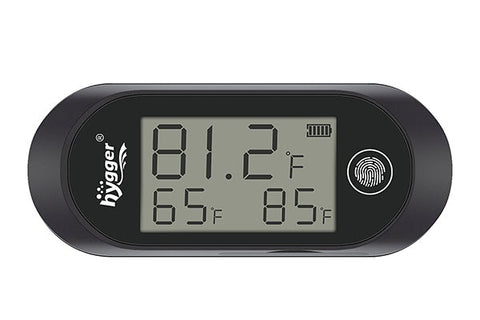Absolutely not! Adding the fish right after a water change can be detrimental to your fish's health and stress it to death. The health and well-being of our pets entirely depend on us. Therefore, letting those delicate water creatures at the mercy of chemicals containing tap water can have fatal repercussions.
Why can't you add the fish directly to the water?
Whether you have changed your fish tank's water for maintenance and cleanliness or are just about to add a new fish to a tank, you can never add the fish directly to the water in the tank.
Acclimatization of these aquatic creatures is imperative for their well-being, or else the fish will get stressed out (or possibly die) due to a drastic change in its environment.
1. Change in the pH level is horrible
You can not add fish to the water because the drastic change in the water's pH level (the level of acidity or basicity) can be fatal.
For your convenience, measure the pH level of the water the fish had been living in earlier (you can also seek help from the pet shop owner in case of a new fish) and try to keep the pH of the freshwater as close as possible. You can use a water test kit to check the water parameters, including the pH level.
In a day, a fish is believed to be tolerant to a pH change of 0.3; keeping this in mind, you make sure not to stress out your little friend.
2. A small change in water temperature can have huge negative health impacts
Minor temperature changes affect your water pet's health to great extents. Therefore, it is crucial not to add the fish directly to prevent any mishaps; instead, wait for it to reach the desired temperature (or use your heater to warm the water).
Before adding the fish, check the temperature with a thermostat to see if it is in the suitable range.
3. Chlorine in tap water is a big no-no
The tap water is full of chemicals that have no health hazards to humans but are fatally harmful to members of Phylum Pisces. Chlorine, for instance, has to be removed from the water to make the water suitable for a fish tank by treating it with a dechlorinator. That's what we called "dechlorinating tap water".
4. Ammonia and heavy metals in water are killers
Tap water contains compounds (ammonia and nitrates) and metals harmful to the fish. To lower the nitrates and ammonia in fish tank, treat it with a water conditioner to make it safe for aquatic life.
5. The tap water is free of good bacteria
Bacteria are indispensable in a fish tank, whereas tap water has very little concentration of these microorganisms. Therefore, it is crucial to let the water sit for at least 24 hours before adding the fish to it. The waiting hours will allow the beneficial bacteria to contaminate the water, which is necessary for natural processes (Nitrogen Cycle and Decomposition).
Before adding the fish, test the water with a tester available at almost every aquarium store. You might as well consider turning off the lights so as not to scare the little thingy.
6. Acclimatization of the fish
Adding fish should not be sudden; rather, keep it in a plastic bag with the water it used to be in. Place the bag in the tank for at least 15 minutes. Then, transfer a small amount of the water from the aquarium to the bag for gradual adaptation of the fish.
After repeating the process 3 to 4 times, move the little guy to your aquarium with great diligence as you don't want the water from the plastic bag to enter the tank.
How to change the water in your tank, and why is it necessary?
Changing your fish tank's water every week or two is imperative because apparently, the water housing your favorite pets might seem squeaky clean but can be contaminated with toxins and chemicals.
Changing water is also a good way of replenishing it with minerals and elements (like dissolved oxygen).
Some people might think of cleaning the aquarium as emptying it, taking everything out, and scrubbing it hard to get the cleaning job done (what a whole lot of work).
To many people's surprise, the cleaning is as easy as stirring a spoon in a wok of soup. Here is our easy-to-follow guide to changing your water tank.
1. Prep session
Feed your water pets 2-3 hours prior to the water change. Also, consider unplugging all the equipment (filter and heater), so you don't run into an accident or damage anything.
2. Change in portions
Remove around 15%-20% of the water (depending on the tank size) and replace the removed liquid with fresh water (the one kept still for 48 hours in a new bucket or in a one that has not been used for purposes other than fish tank cleaning). In this way, it will be easier for the fish to adapt to the water without stressing out.
Note: Please take into consideration that you leave space between the water surface and the roof of your aquarium for the exchange of gases (oxygen and carbon dioxide).
3. Clean the debris
Use a siphon to remove debris and wastes. An algae pad can help take out algae from here and there inside the tank. A light scrub on the inside of the glass is also tolerable as long as you don't scratch the glass or hurt any organism.
You might get tempted to deep wash the decors and the filter with tap water and a regular scrub. But intense washing can end up killing healthy bacteria.
In case of filthy inner items, experts recommend a gentle rinse using bucket water instead of tap water. The rest of the cleaning job should be left to the filter.
4. Don't touch the fish
While changing the water, make sure the living creatures inside are left untouched and not scared off.
Remember, a clean aquarium guarantees healthy and longer-living fish. So take it easy and get down to cleaning the house of your little companion that fills your heart with happiness.




Comments (0)
Back to Beginner Guide & Advice